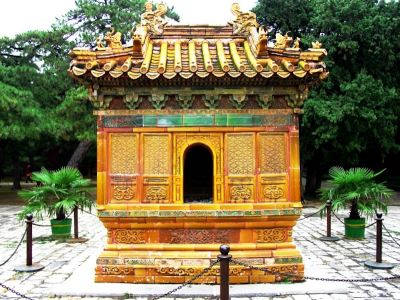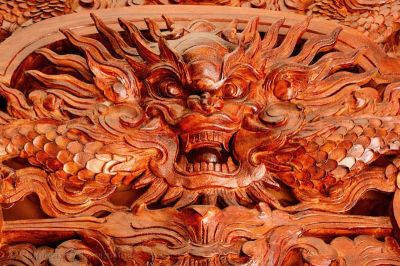Song Dynasty 宋朝 960 - 1279
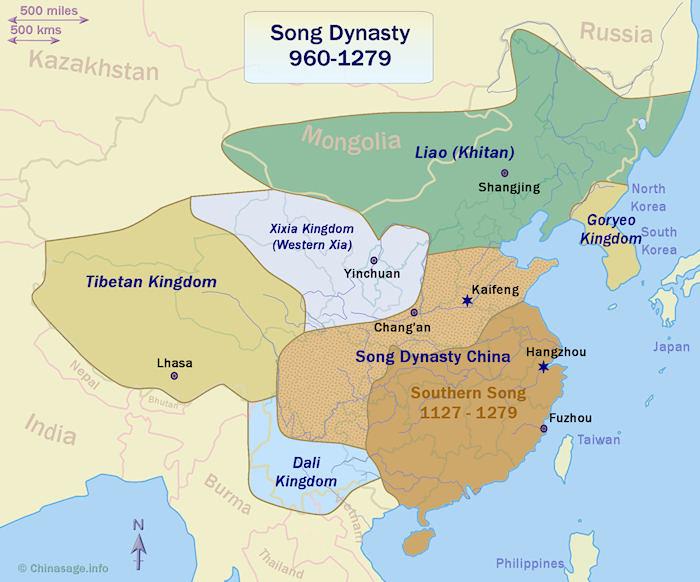

The Song dynasty is divided into Northern and Southern periods. Incursions from people to the north caused the empire to contract south of the Yangzi and the capital to move from Kaifeng to Hangzhou.
Despite the loss of the extensive lands to the west and north the Song dynasty represented another blossoming of prosperity and cultural endeavor. The founder of the dynasty,, Zhao Kuangyin (aka Taizu), took the best parts of the existing administrative system and ditched others; for example it was no longer a capital offense to disagree with the emperor. He reduced the power of provincial governors and disbanded the army that had brought him to power. By his death in 976 he ruled most of southern China except for Fujian and Zhejiang without much armed conflict. To remove the usual instability brought about by the reigns of child Emperors the throne passed to his brother not his son.
During the dynasty, the population rose to over 100 million; great cities with over one million people were founded and others extended - for the first time in the world. The capital Kaifeng became even more populous than the former Tang capital at Chang'an. Painting, calligraphy and philosophy achieved new levels of sophistication. The first University was founded at Kaifeng with already 4,000 students. It was the time of the great thinkers Shen Kuo, the ‘Chinese Leonardo da Vinci’ and polymath Su Song ➚. The Emperors themselves became skilled in these arts. At this time industry, commerce and agriculture in China were far in advance of the rest of the world. Blast furnaces produced quality iron; gunpowder started to be used in weaponry; water powered textile mills; the first accurate mechanical clock was made. With forests already severely depleted coal began to be used as a fuel. Paper money, controlled by the state, was printed for the first time. Song porcelain remains the most highly prized of all ceramics. After the move to the south, five Southern Song emperors ruled the empire wisely. The nation no longer saw itself as purely agrarian, it was developing new technologies and commercial activities. A Jewish community set up in Kaifeng, emphasizes the open nature of Song society.
The great flood of 1048 proved a pivotal moment, a heatwave in July was followed by a major flood on the Yellow River that resulted in the river changing its course to the north rather than the south of Shandong province. Thousands of years of water management and irrigation were now made irrelevant. The effects of the flood lasted years and over a million people died, northern Song China never really recovered from this environmental catastrophe. A flood normally lays down rich soil but in this case thick layers of infertile sand covered the plain. The famine caused many young men to join the army and women became slaves.
Rise of Confucian doctrine
Confucian doctrine displaced the dominance of Buddhism in the Tang dynasty at the Imperial court. Song dynasty rulers succeeded in living closer to the Confucian ideals than any other dynasty. The philosopher Zhu Xi ➚ re-invigorated the Confucian canon with a more consistent interpretation of the ancient texts. The ‘Neo-Confucian’ philosophy extended Confucian thinking into areas away from ethics into such things as cosmology and metaphysics. Rather than being a narrow treatise on ethics and rites it became a philosophy for life-long self-improvement. The state bureaucracy grew in size and complexity and the Imperial examination system was perfected with many poorer students able to become high ranking officials based purely on scholastic merit. The top examinations were now run regularly every three years. Literature blossomed, with great poets such as Su Shi producing classic poems. In the sciences, achievements included the invention of matrix algebra and the discovery of magnetism.
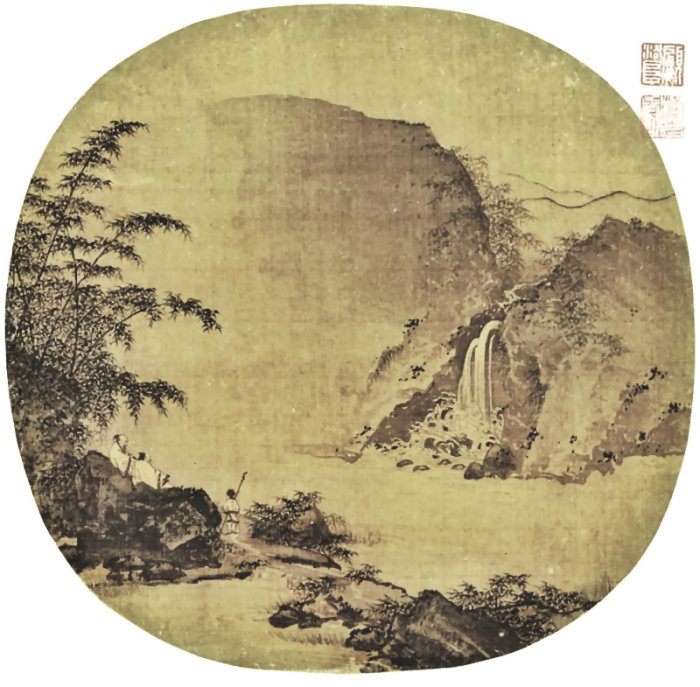
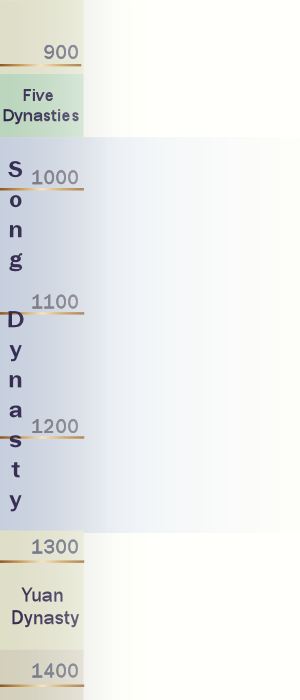
Loss of Northern China
Emperor Huizong (1101-1135) was more interested in art than armies; he presided over the loss of northern China to the northern Jin dynasty. The early Song emperors had tried but failed to subdue the nomadic peoples to the north and never really had full control of northern China. Attack came from the Western Xia (or XiXia) in the north-west; the Qidan Khitan WG (Liao dynasty) and the Jin (Jurchen) nomadic peoples of the north-east. The insurgents started taking control of the open border regions in the north with the use of Chinese military strategy and weaponry. The Qidan had built up their forces in Liaoning from 936-1125. An alliance between Song and Jin forces then defeated the Qidan. However the victorious alliance proved disastrous as the Jin then turned on their Song allies and overran the Song capital at Kaifeng (then known as Bianjing or Dongjing). They then captured Emperor Huizong and the imperial family in 1126, the Emperor died in squalid captivity in 1135. The remnants of the Song administration fled far to the south to continue as the Southern Song dynasty with capital at 临安 Lín ān (now called Hangzhou). The names Lin'an ‘Temporary Peace’, and Xingzai ‘Temporary residence’ reflected the continuing desire to defeat the Jin and re-unify China; however attempts to reconquer the north ended in failure.

Southern Song dynasty (1127-1279)
The Southern Song remained a peaceful and prosperous culture exploiting the rich agricultural land of the Yangzi valley. Many northerners moved south, and the present day Hakka people of Guangdong and Guangxi are believed to be descended from them. The newly settled territories were burgeoning with new settlements, now for the first time half the population was located in the south. The importance of the sea trade, now that access to the Silk Road was blocked, led to advances in ship-building, producing ships up to 300 feet [91 meters] long with up to 1,000 oarsmen. The city of Ningbo became the main port for foreign trade. This was made possible by the technology that Arab sea traders brought with them. A trade triangle developed between China, India and Indonesia with spice as the most valuable cargo. The invention of the magnetic compass proved invaluable for navigating long sea journeys, a secret zealously protected by the Chinese. The compass also enabled accurate land maps to be drawn up. Envoys were sent out to foreign lands and reports of their travels were published in China; as by this time China was printing extensively on paper. Indeed printing not only provided a wide range of books for scholars but also manuals on agriculture and technology for ordinary people. The historian Sima Guang ➚ wrote the largest history book ➚ ever then produced 资治通鉴 zī zhì tōng jiàn ‘Comprehensive Mirror to aid in Government’ covering 1,400 years of history and this was widely read over the next 900 years. Availability of printed books led to a surge in literacy.
In the Southern Song the position of women improved, they were permitted to own property, engage in (some) businesses and write poetry (including the famous poet 李清照 Lǐ Qīngzhào ➚).
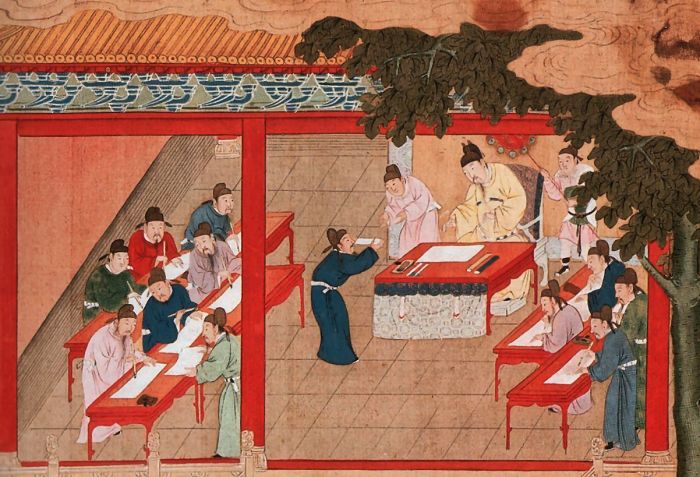
Image available under a Creative Commons license ➚
Jin Dynasty 金朝 1115 - 1234
The capture of Kaifeng by the Jurchen people from the north-east beyond the Amur river led to the formation of the short-lived Northern Jin (Golden) dynasty. As the Song dynasty ruled by Han Chinese continued in the south it is not normally listed as a Chinese dynasty. While the Mongols were building their unstoppable force that grew out of Mongolia to the north, the Jin served as a buffer zone protecting the Song Empire to the south. Their Imperial capital was built at Zhongdu (now Beijing– the first dynasty to do so), and they took to traditional Chinese ways honoring Confucius just as much as in southern China. To foreign embassies there was little to distinguish the two Chinese Imperial courts at Zhongdu and Hangzhou. The Jin dynasty ended in a re-run of the events that formed it. The Mongols formed an alliance with the Song against the Jin in 1234. When the alliance triumphed and captured Kaifeng from the Jin it was the Mongols who turned on their Song allies and beat them. The Mongols under Genghis Khan took advantage of internal rebellions to establish a new unified empire that went onto eventually conquer much of the known world and the whole of China - the Yuan dynasty.
Xixia (Western Xia) Kingdom
The Western Xia kingdom 西夏 xī xià was founded by a tribe of Tangut people who retained strong links to the Tibetans and Mongolians. It was established in Ningxia 1038-1227 ruling over many Han Chinese settlers and controlling the strategic Silk Road. The Tangut tribe, called Dangxiang 党项 in China, had formed one of the small northern states in the Five Dynasties period and then expanded to control parts of Gansu and Shaanxi.

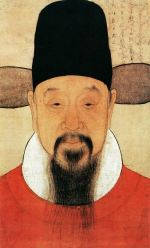
Top Academy in China 725-1911
China can lay claim to having the longest lived academic institution. The Hanlin Academy was founded way back in the Tang dynasty long before any European university. For nearly 1,200 years it employed all the top scholars in many disciplines and had its own set of buildings at the Imperial capital. The academy produced Imperial edicts, the Imperial histories as well as educating the Emperor's children and administering the university examination system. Read more…The kingdom retained a Tibetan script based on the Chinese model and used a Confucian system of administration and education. Buddhism was the main religion. They had an effective army with well trained cavalry enabling them to resist conquest from the neighboring Song Chinese. Their stranglehold over the Silk route trade forced the Song to look to the southern sea ports for new trade routes. In 984 the Western Xia mounted an expansionist campaign and formed an alliance with the Liao kingdom against the Song.
Mongol annihilation
In 1038 the Xixia ruler Li Yuanhao declared himself Chinese Emperor with capital at Xongqingfu (now called Yinchuan, Ningxia) and broke off the alliance with Liao. They named themselves ‘Western Xia’ after the ancient Xia dynasty but are not listed as a Chinese dynasty. The Northern Song attempted to subjugate them but they failed leading to the signing of an ignominious treaty with the Xixia in 1044. The Song were forced into massive military expenditure to hold them at bay. Internal feuds then weakened the Xixia kingdom that covered Ningxia, Shaanxi and Gansu. In 1205 the Mongols invaded, leveling cities and abducting people and stock. The Xixia sought an alliance with the Jin (successors of the Liao) against the Mongols but this proved ineffective. They were wiped out by the Mongols by 1227 and little evidence of their culture remains, even their language was lost for centuries. Historians estimate only 1% of the population survived the massacres that took place. Genghis Khan died during his campaign against them. It was the death of Genghis Khan that delayed the Mongol onslaught of the remaining portion of China that was at the time still ruled by the Southern Song dynasty.
